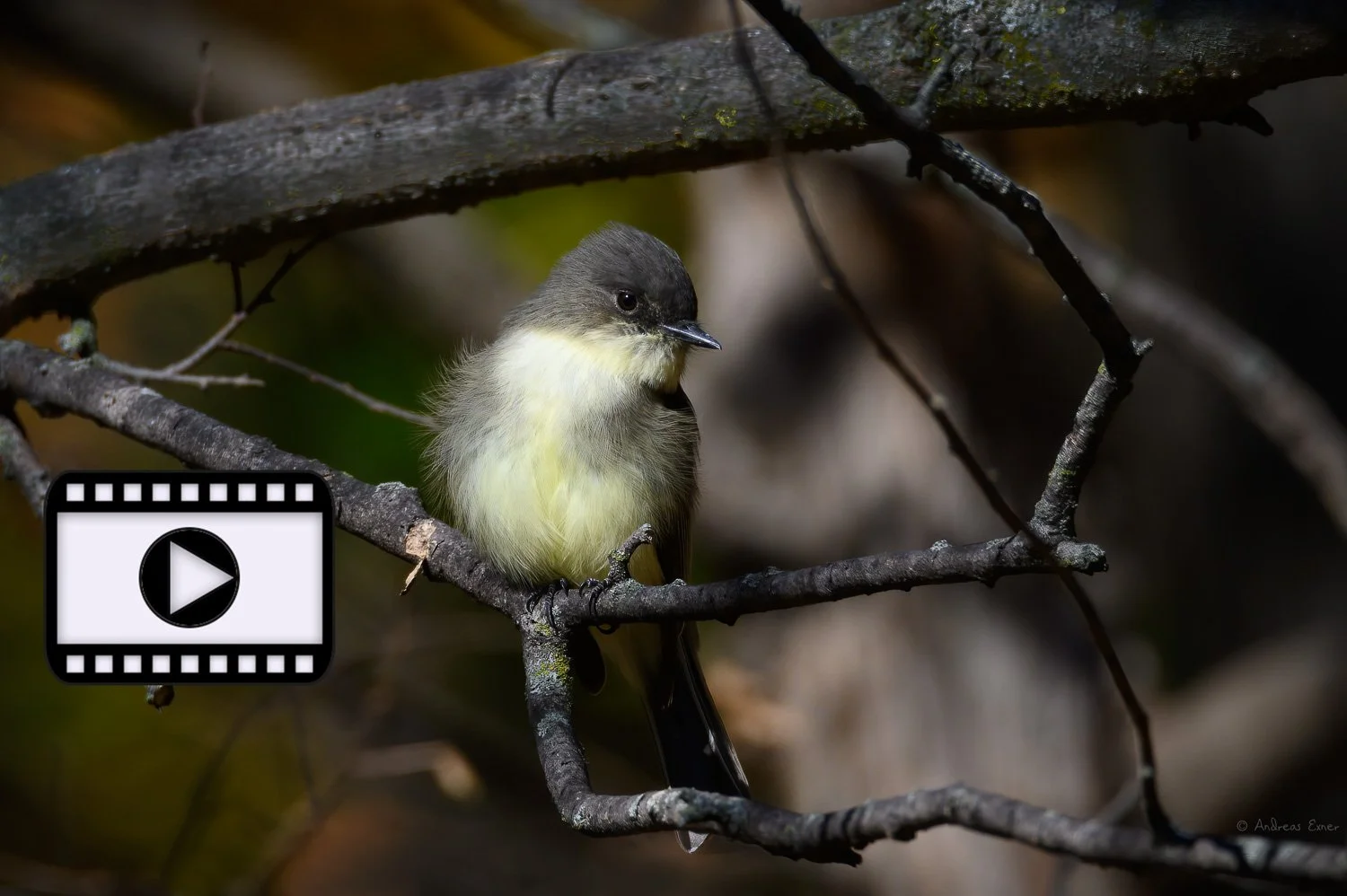Eastern Wood-Pewee, Mines of Spain, Dubuque, Iowa, Sep 06, 2025
Today I came across an Eastern Wood-Pewee while making a brief visit to the Mines of Spain Recreation area. Not an unusual sighting and these little flycatchers are not difficult to spot when they perch on a branch and dive down to catch insects midair or sometimes on the ground. They often return to the same perch, a fact every photographer may like.
Two weeks ago I photographed an Eastern Phoebe, right here in our woods, and that gives me the opportunity to show you how much alike these two flycatcher species look. So how to tell them apart? Here are a few details that may help.
The Eastern Phoebe has a dark bill, while pewees have a yellow or orange base of their lower mandible, which is very good visible in these two photos.
The Eastern Phoebe pumps its tail (the pewee doesn’t). That can help identification if you see for instance the bird just as a silhouette against the sky.
The two wing bars are less distinct on a phoebe, while they are almost white on a pewee.
And last but not least, if you hear the distinctive ”pee-ah-whee” song before you even see the bird, you certainly know that an Eastern Wood-Pewee is in the neighborhood.
Eastern Phoebe, Little Maquoketa Valley, Iowa, Aug 23, 2025

